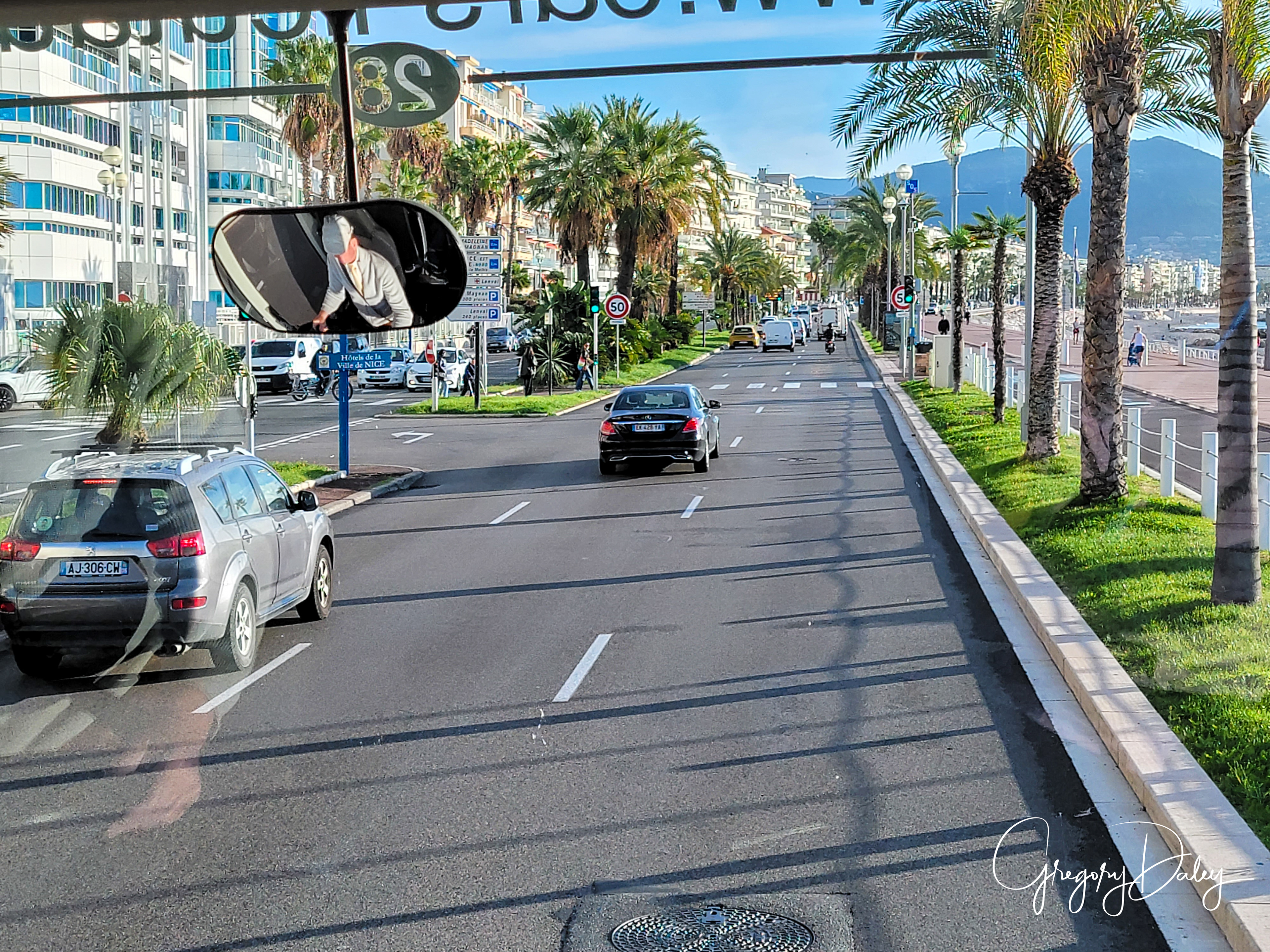
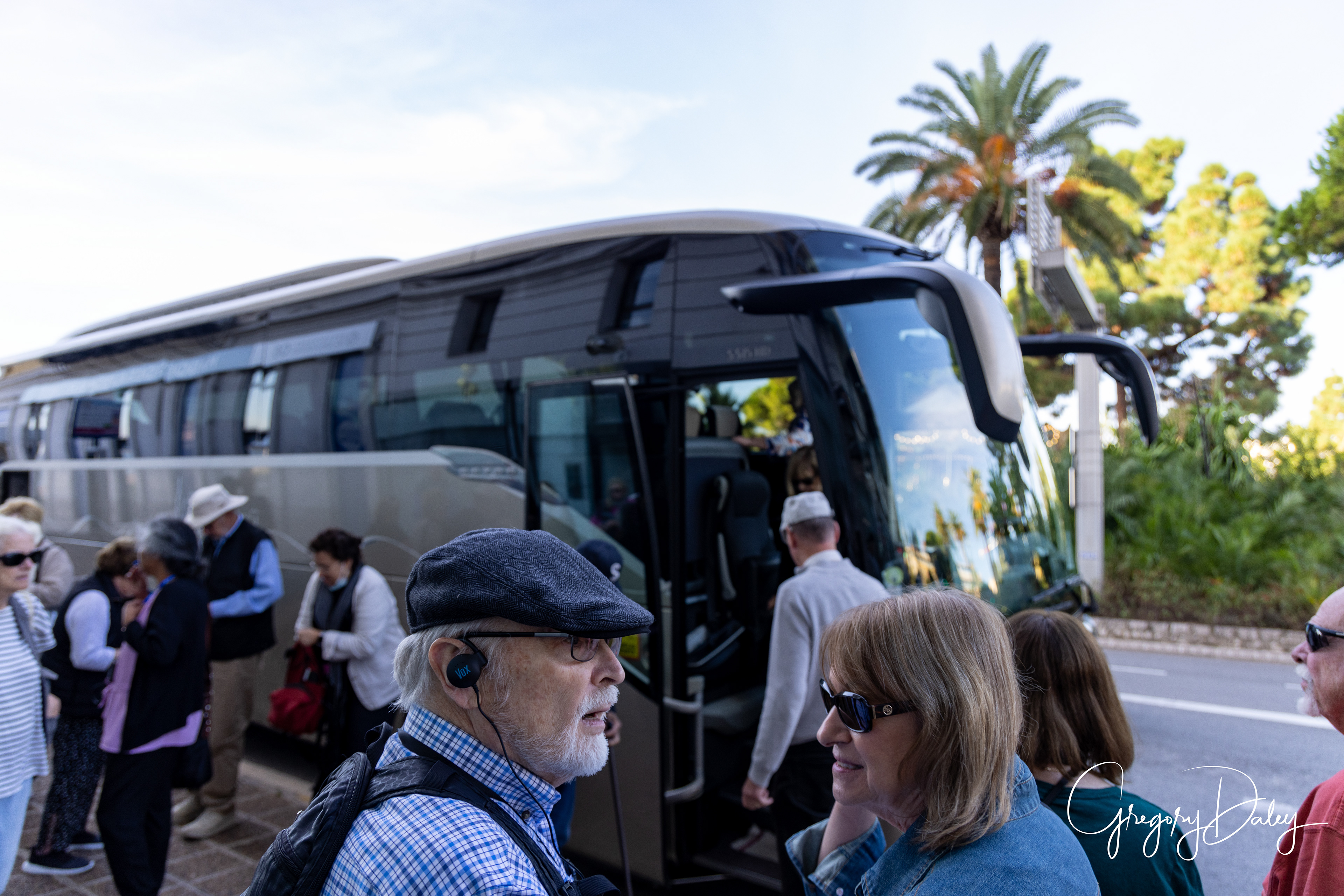
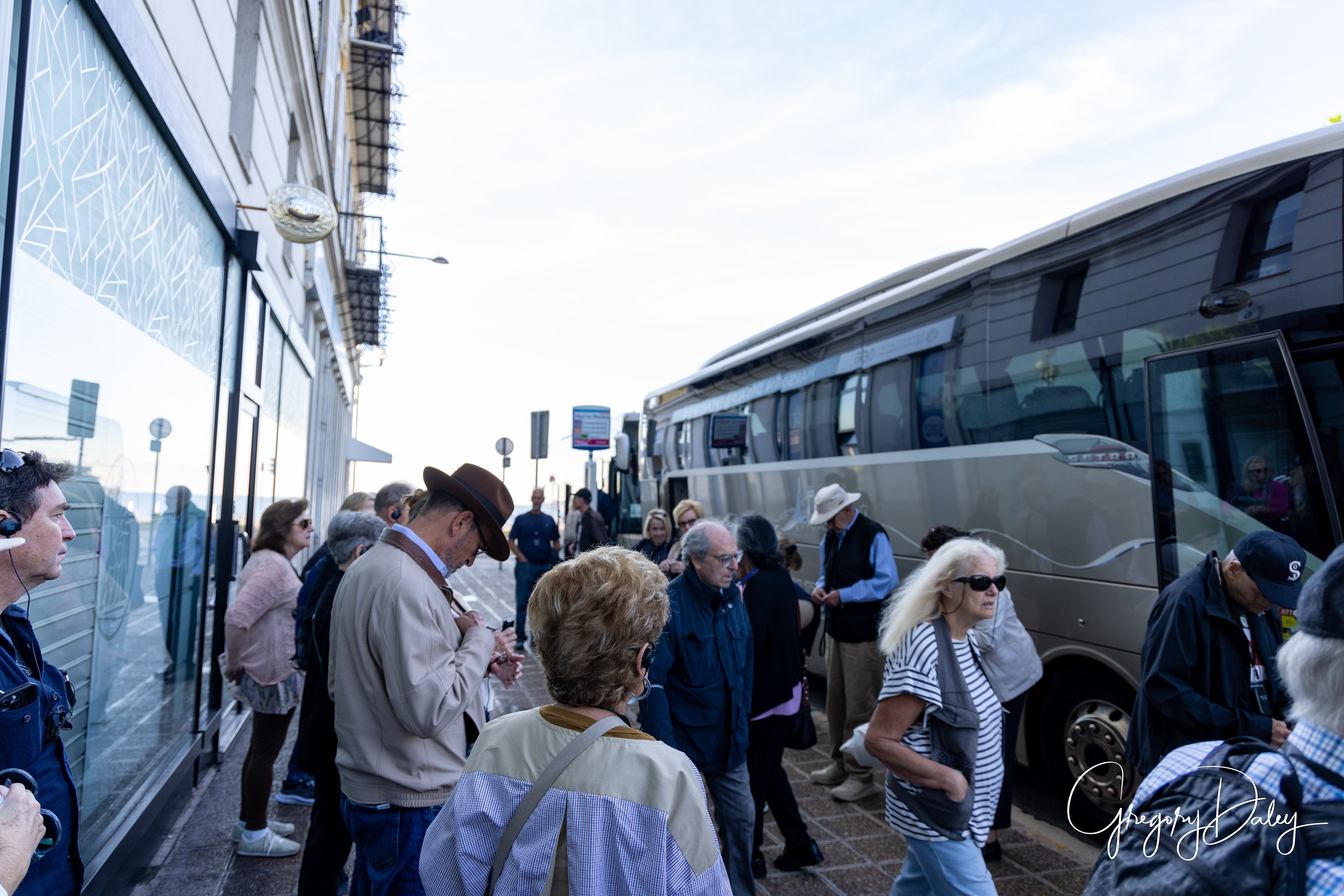
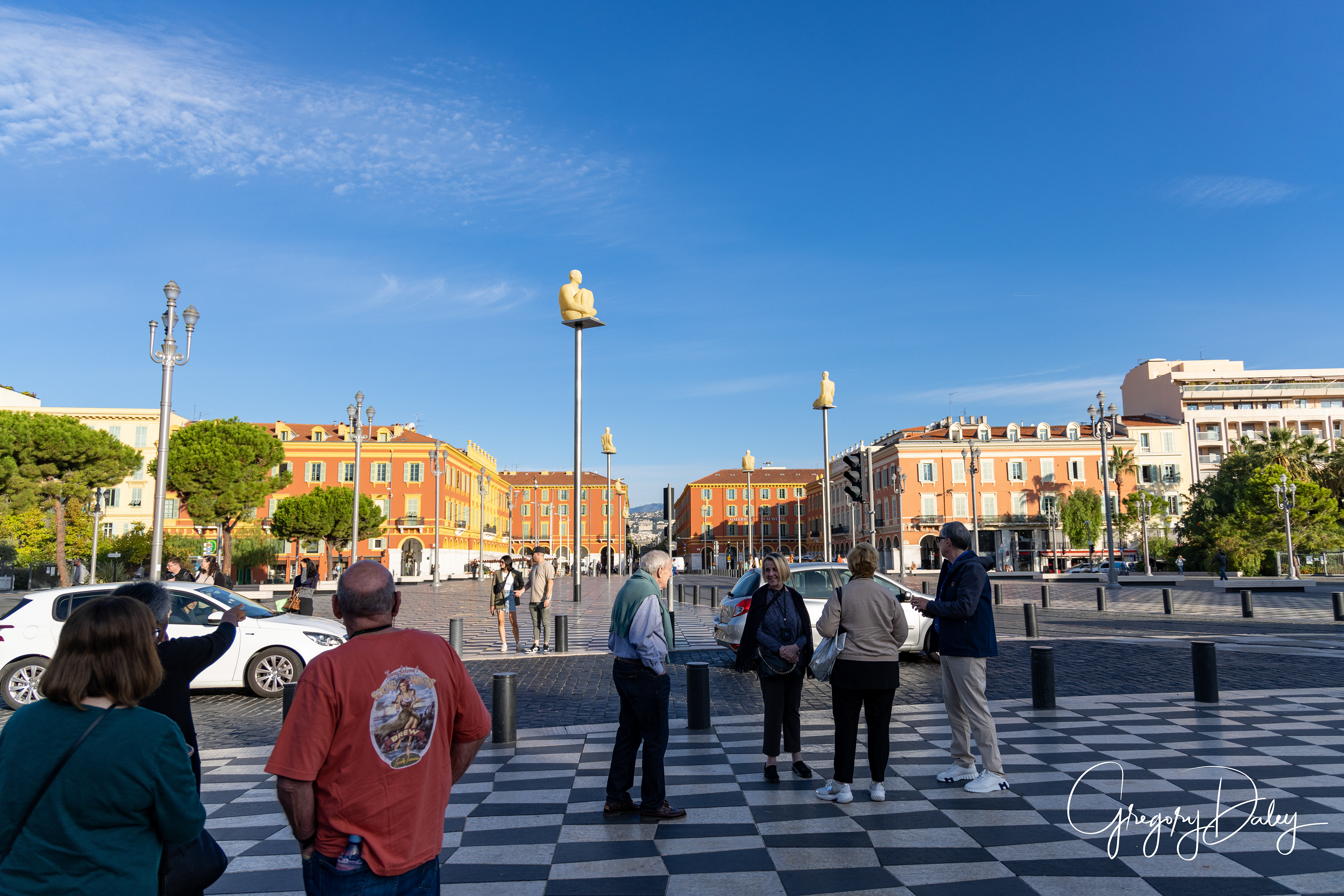

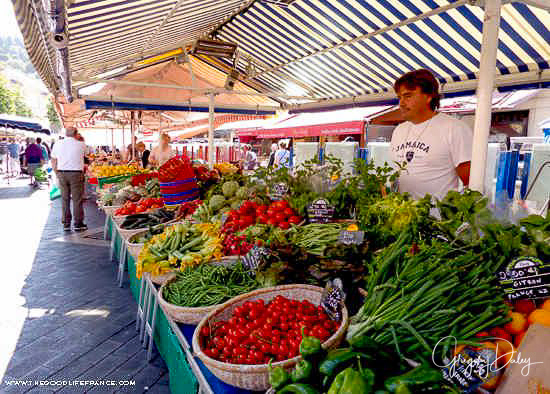
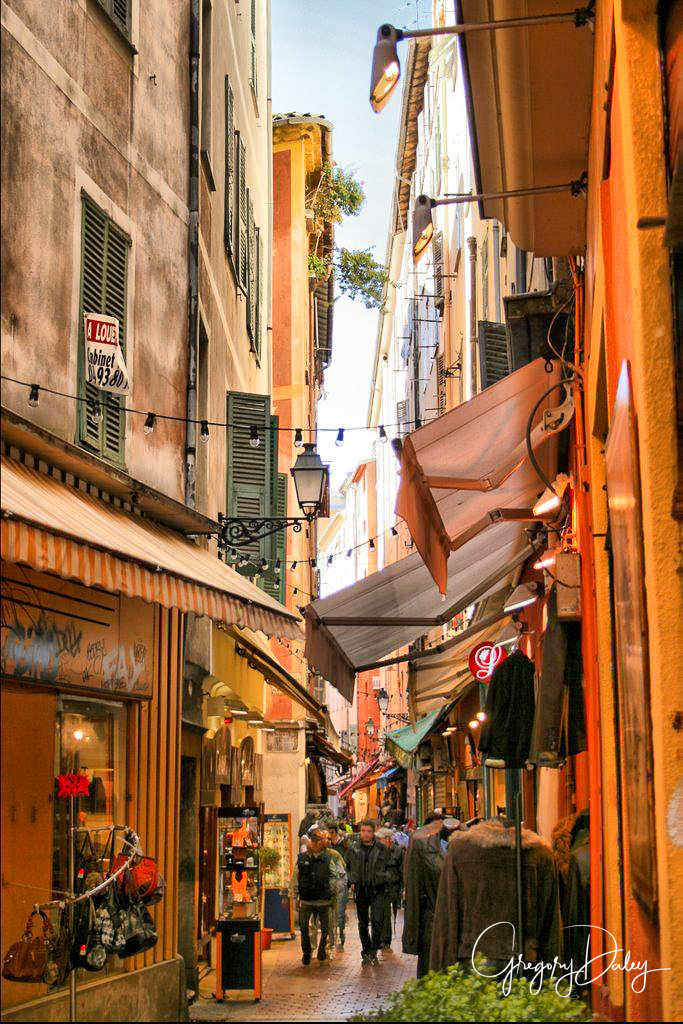
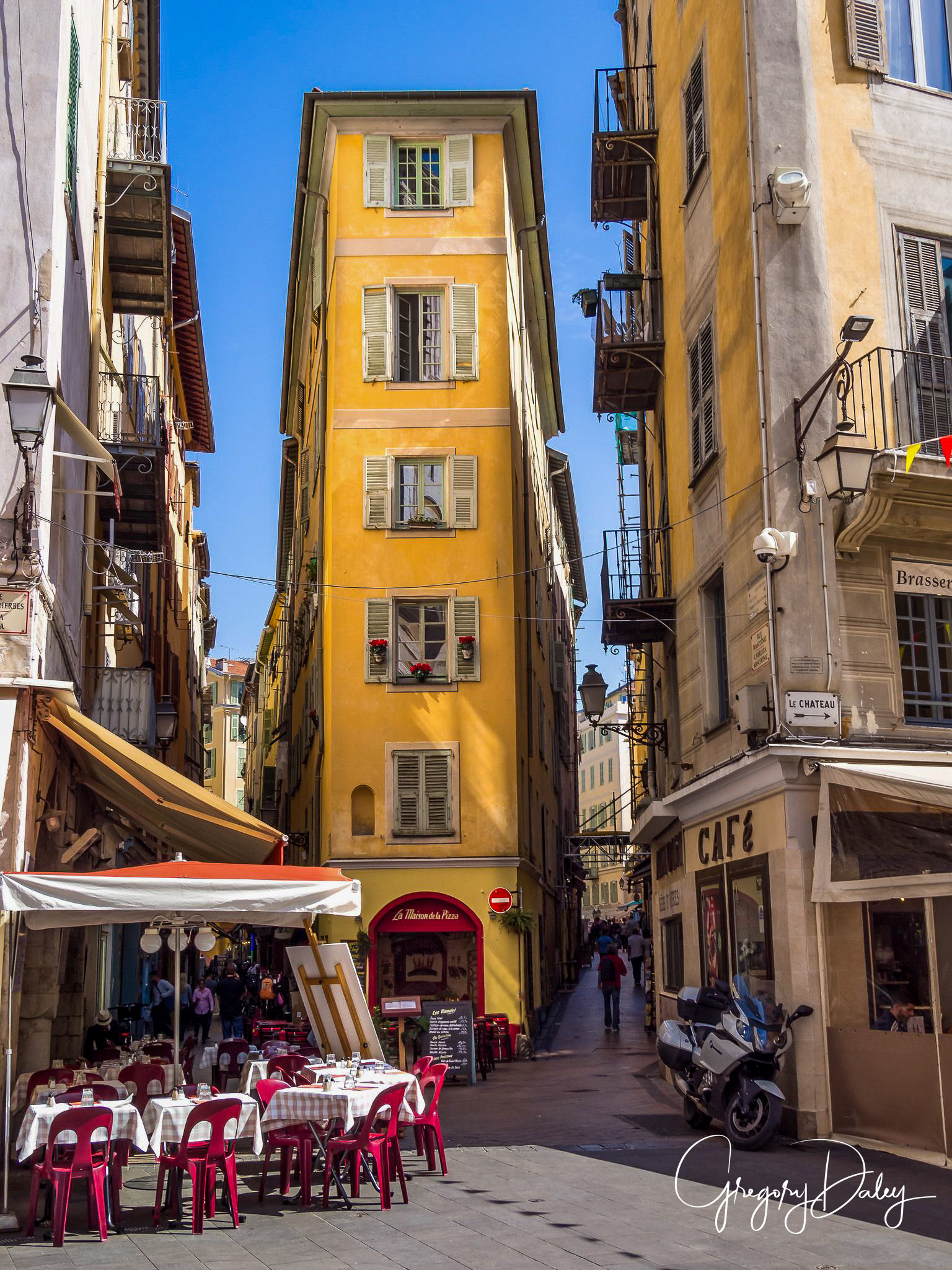

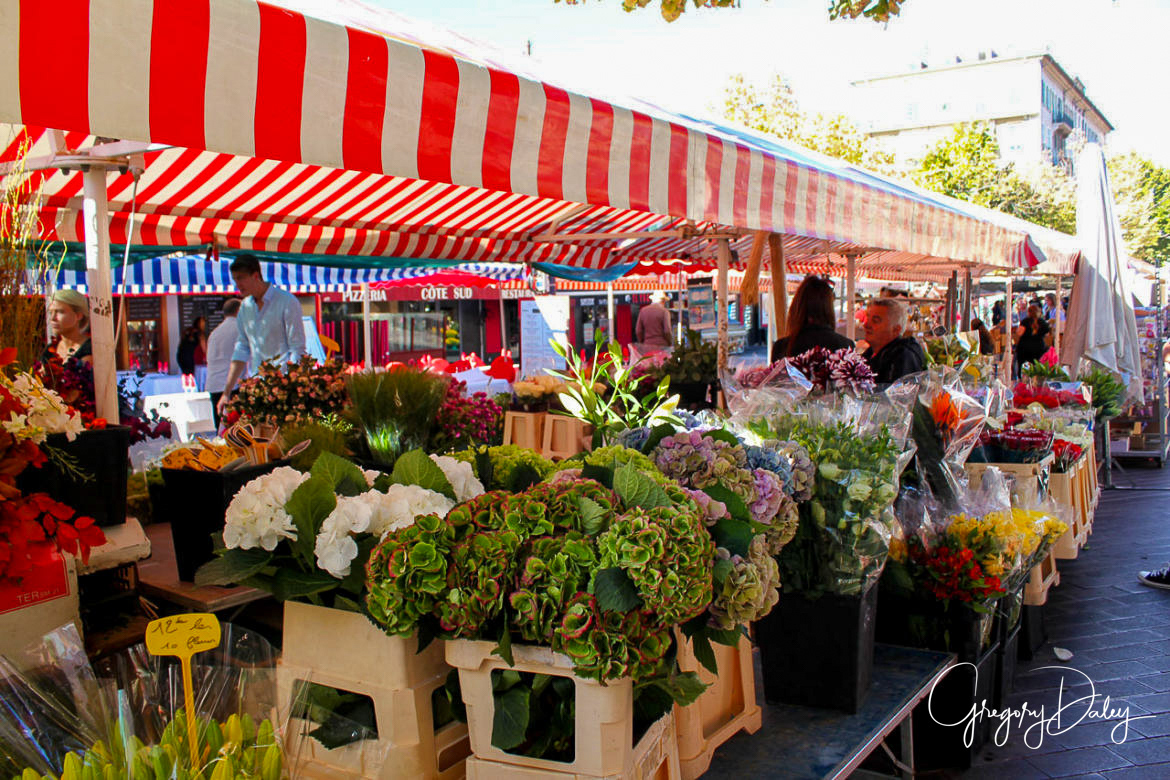


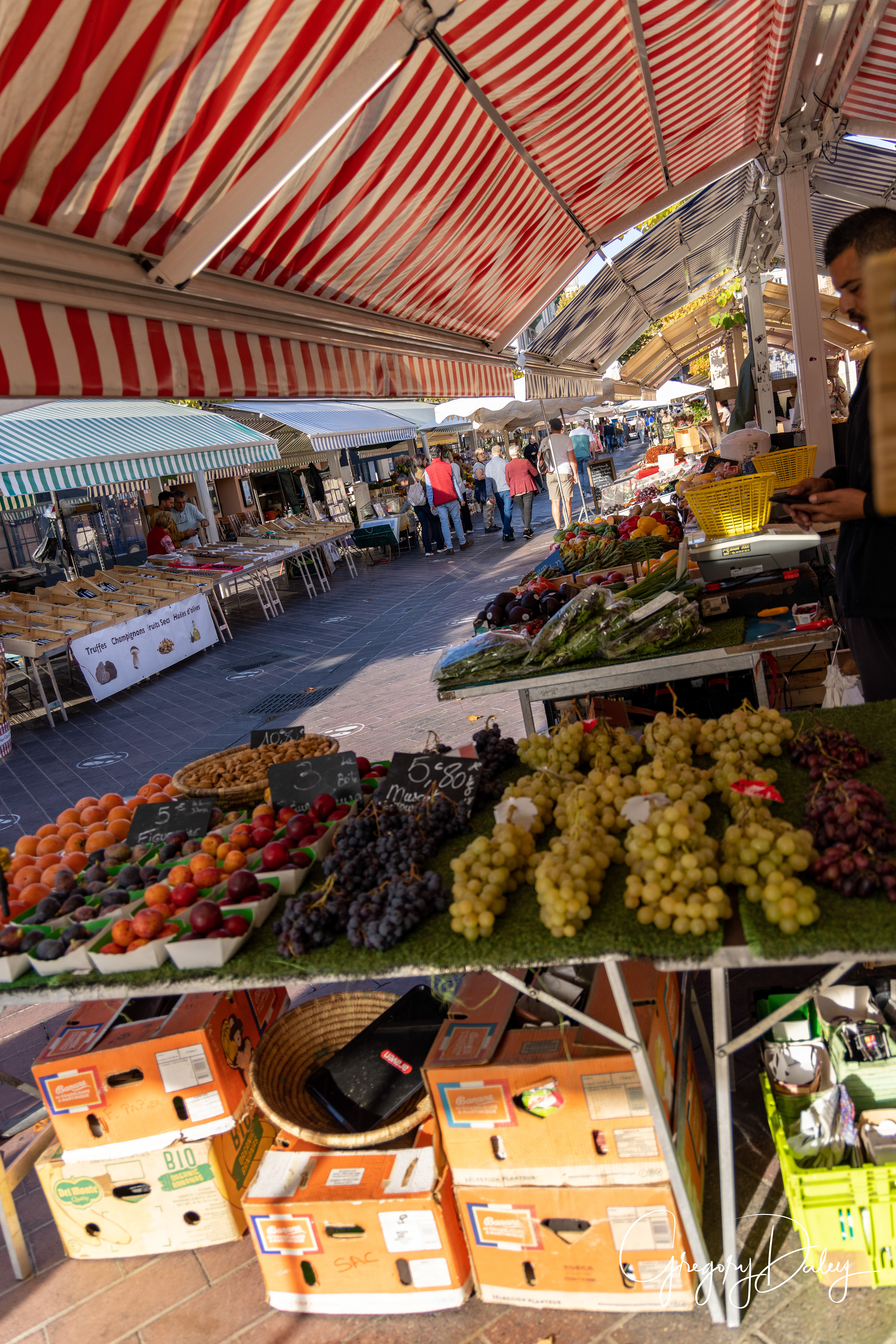
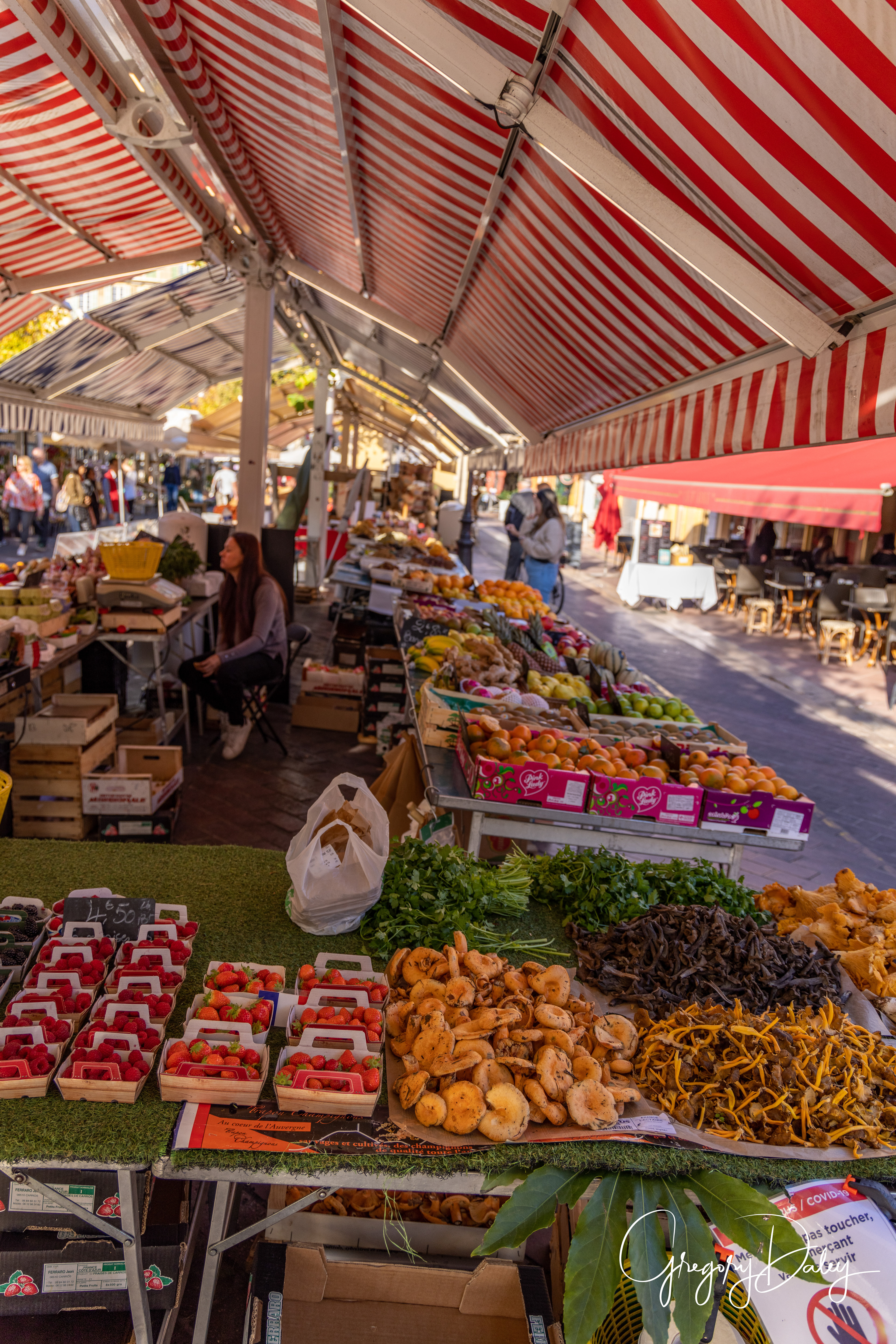
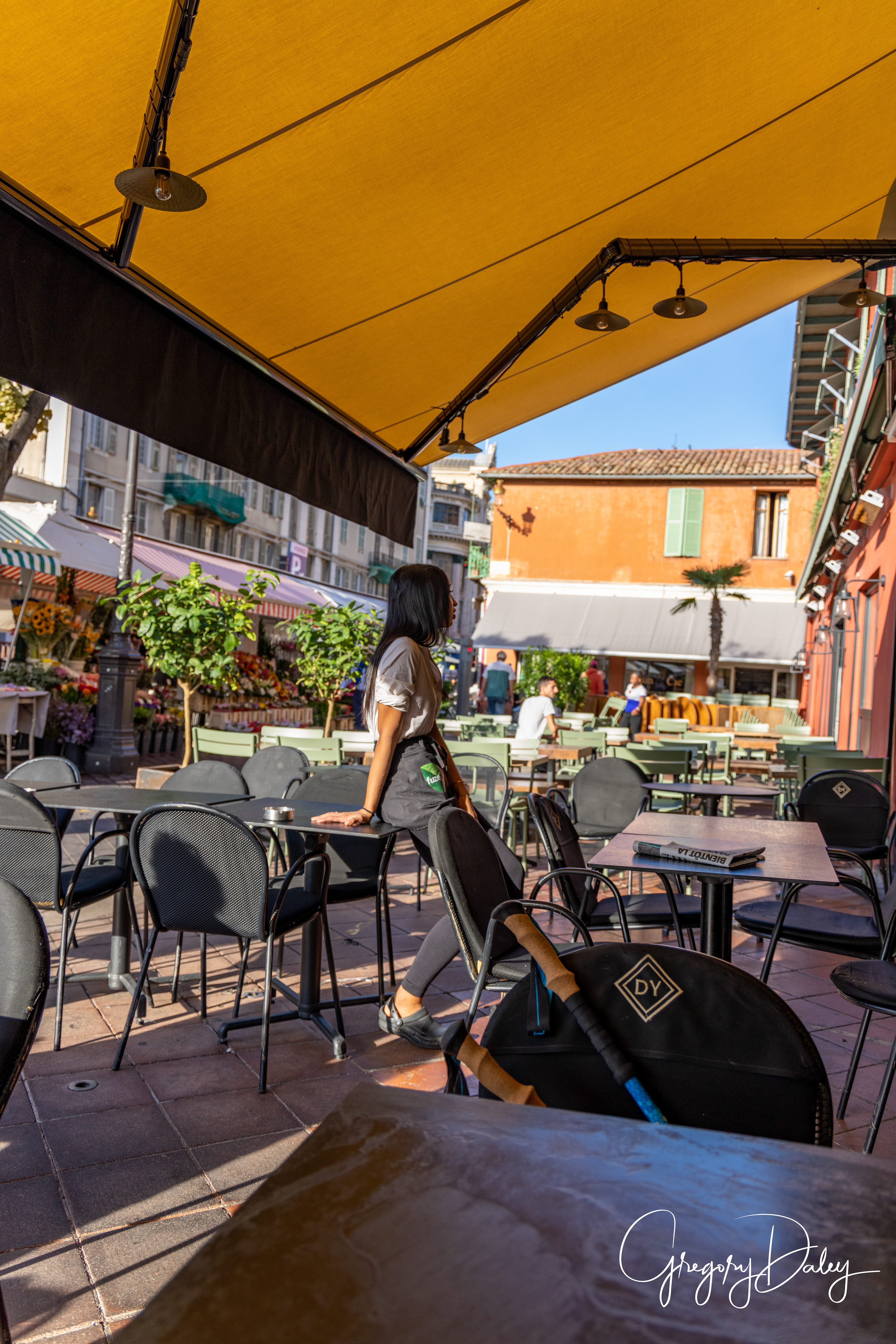
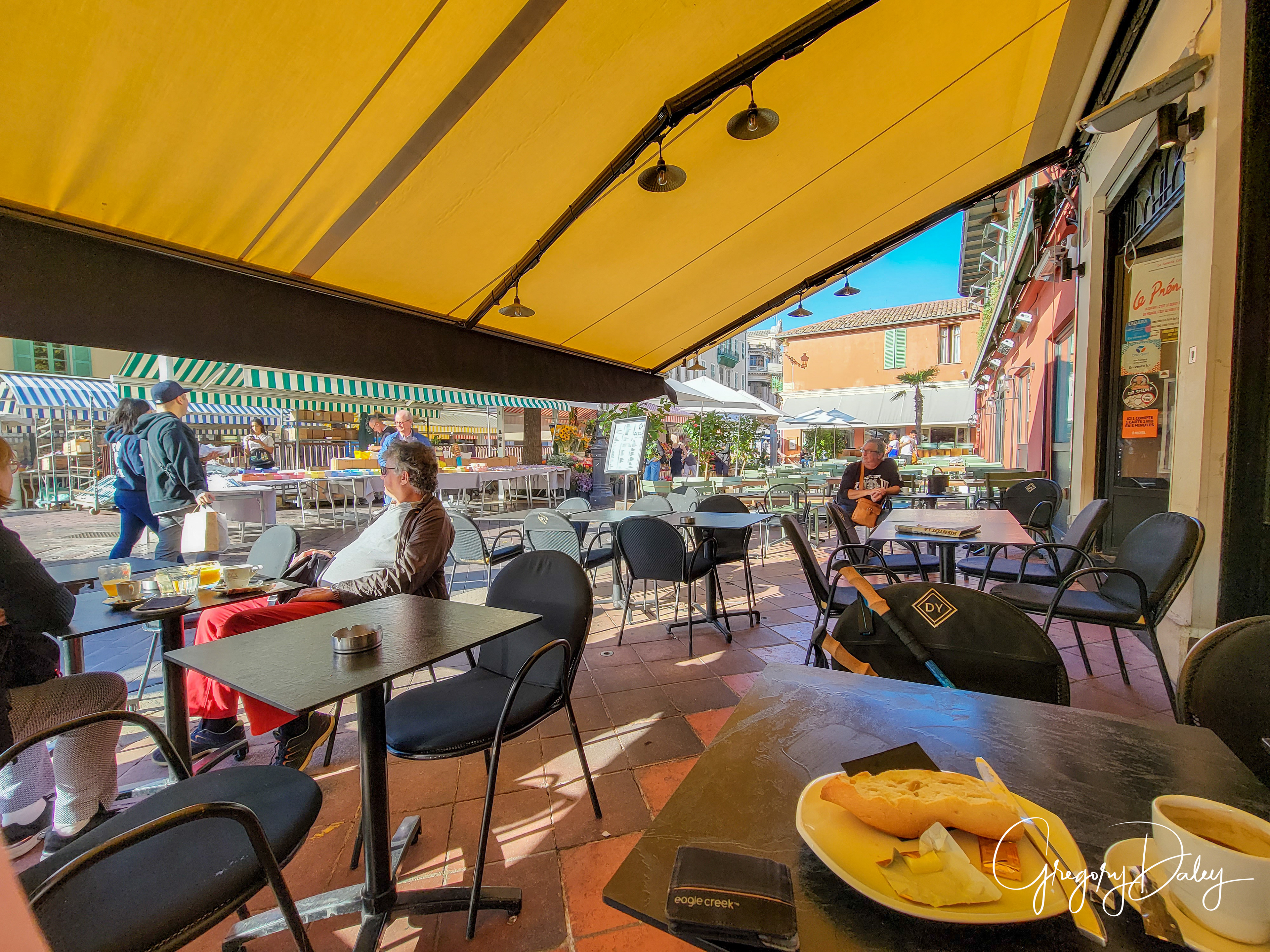
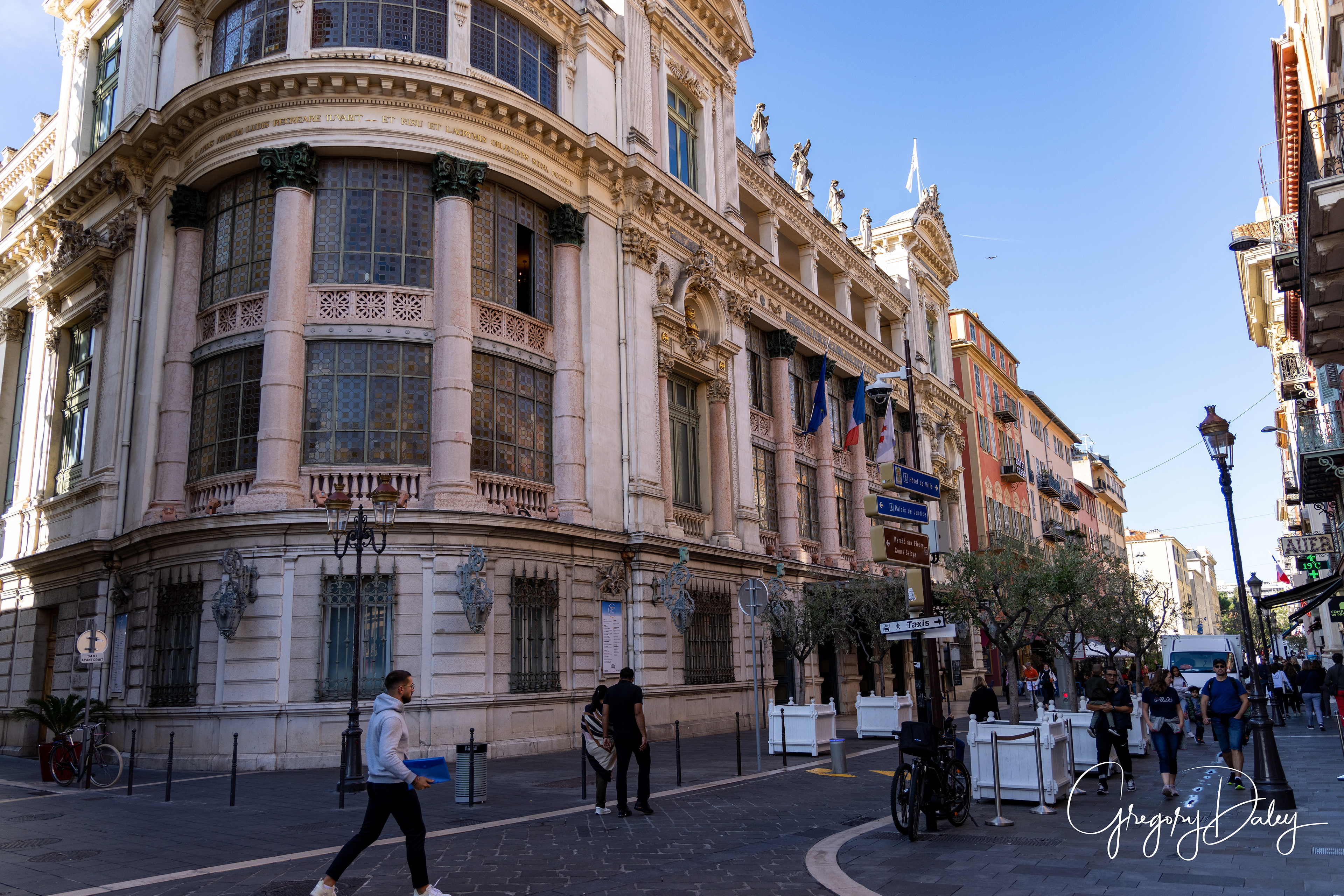
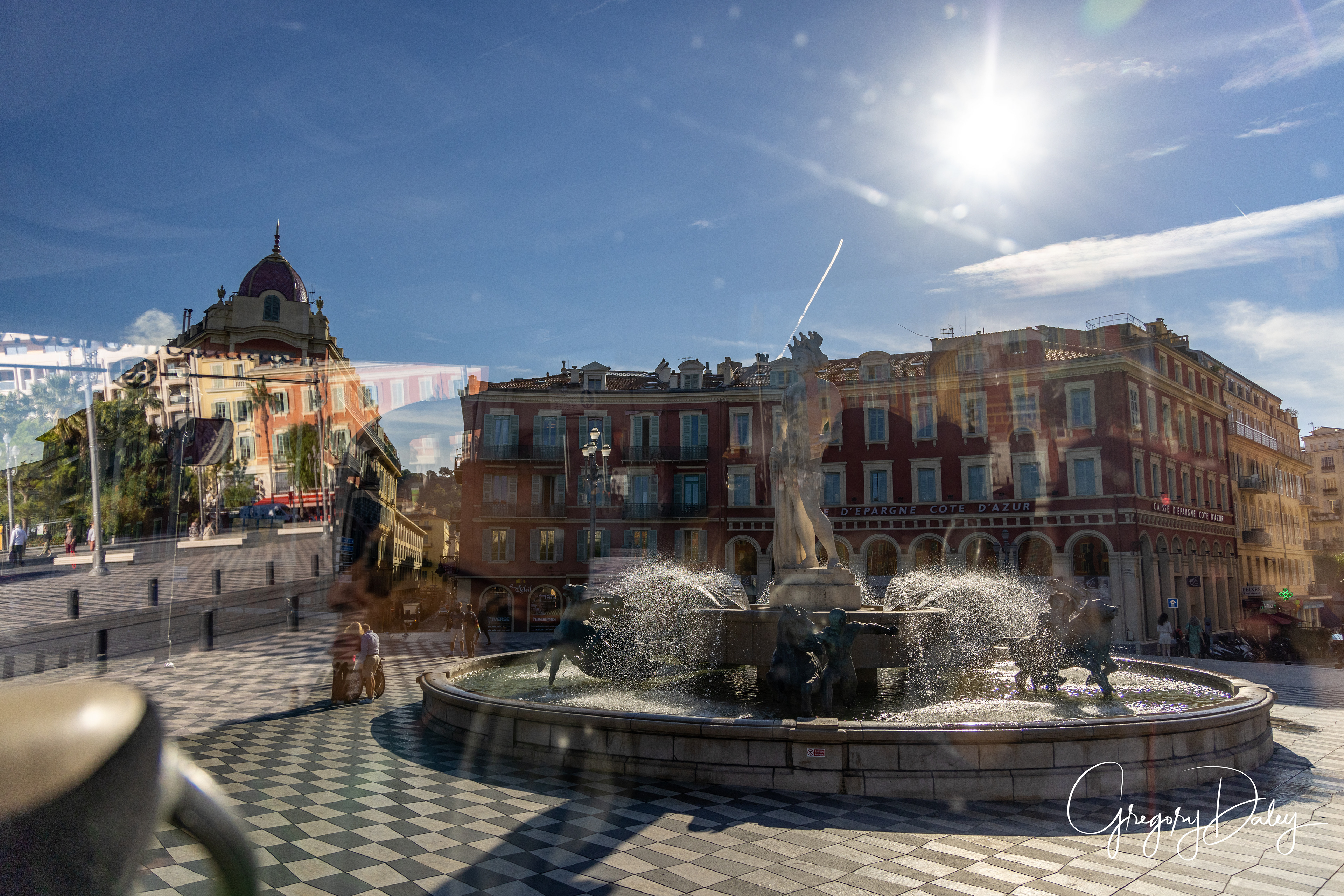
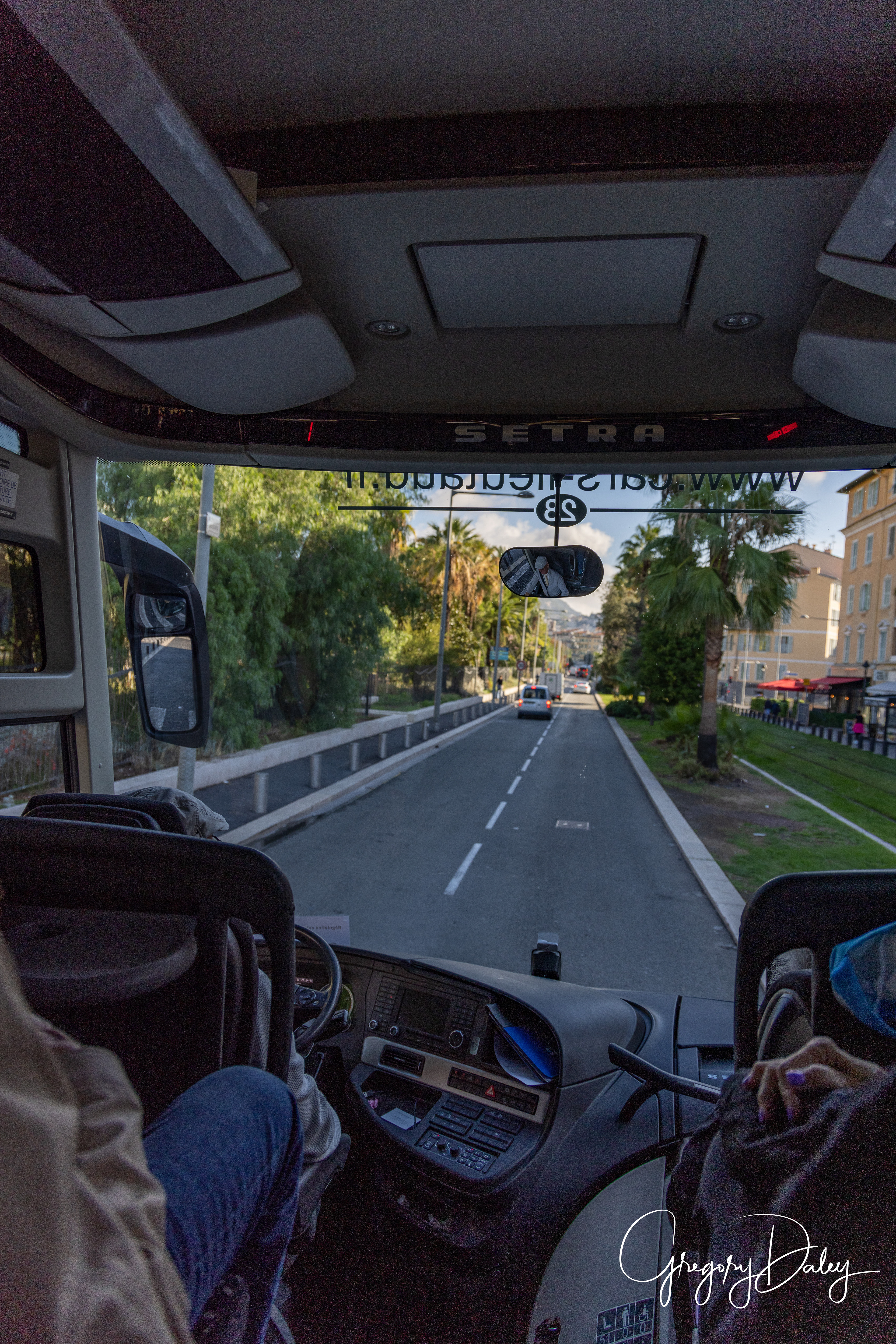
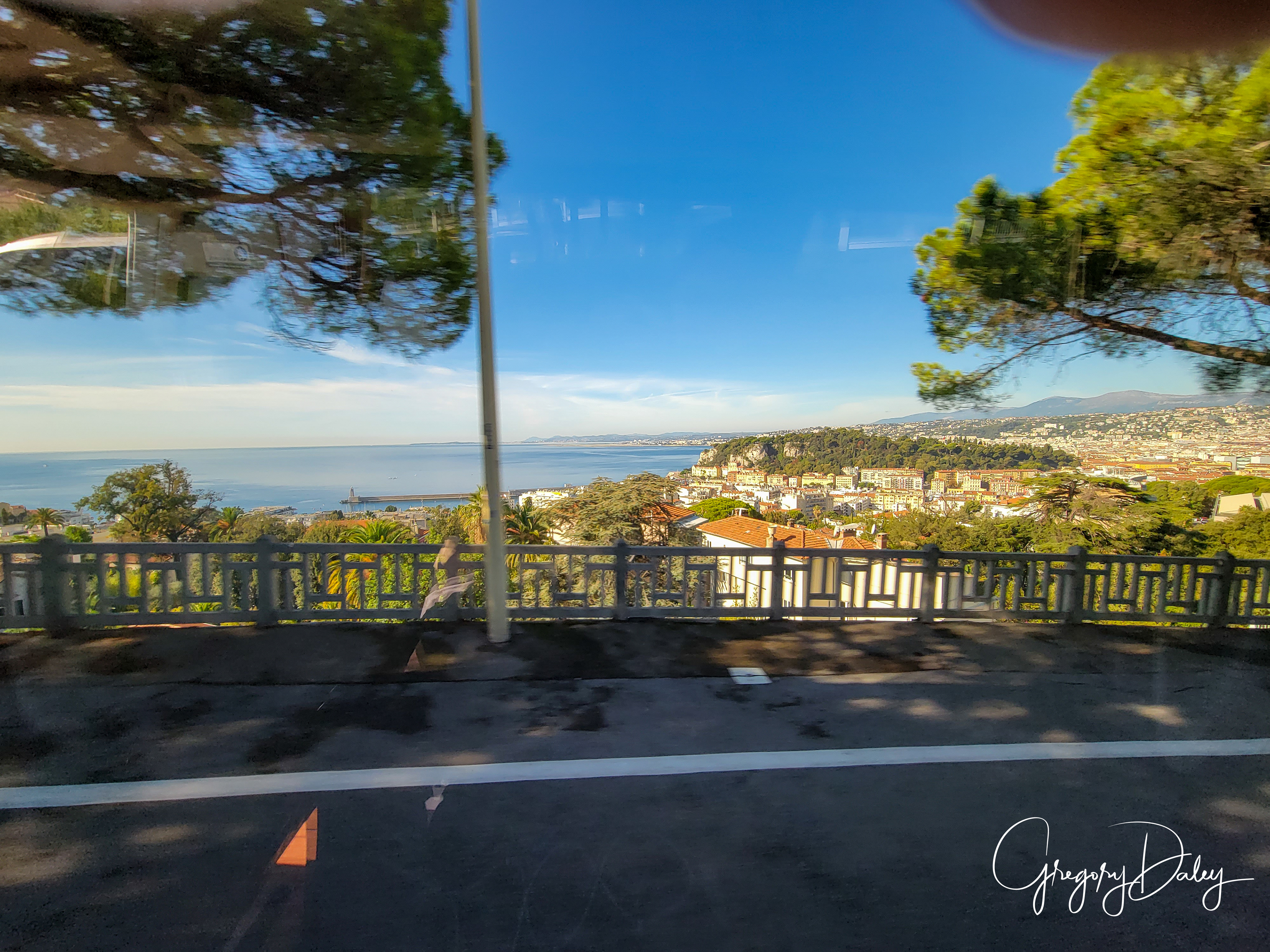

10/11, Day 2 of the tourour Our Tauck tour bus departed Cannes and brought us to Nice. We walked around the square and saw the fresh markets. I stopped at a small cafe near the market and had a piece of bread and a small cup of coffee. Breakfast did not agree with me. Nice is the prefecture of the Alpes-Maritimes department in France. The Nice agglomeration extends far beyond the administrative city limits, with a population of nearly 1 million on an area of 287 sq mi. Located on the French Riviera, the southeastern coast of France on the Mediterranean Sea, at the foot of the French Alps, Nice is the second-largest French city on the Mediterranean coast and second-largest city in the Provence-Alpes-Côte d'Azur region after Marseille. Nice's airport serves as a gateway to the region. The area of today's Nice contains Terra Amata, an archaeological site which displays evidence of a very early use of fire 380,000 years ago. Around 350 BC, Greeks of Marseille founded a permanent settlement and called it Νίκαια, Nikaia, after Nike, the goddess of victory. Through the ages, the town has changed hands many times. Its strategic location and port significantly contributed to its maritime strength. The natural environment of the Nice area and its mild Mediterranean climate came to the attention of the English upper classes in the second half of the 18th century, when an increasing number of aristocratic families took to spending their winters there. In 1931, following its refurbishment the city's main seaside promenade, the Promenade des Anglais ("Walkway of the English"), was inaugurated by Prince Arthur, Duke of Connaught; it owes its name to visitors to the resort. These included Queen Victoria along with her son Edward VII who spent winters there, as well as Henry Cavendish, born in Nice, who discovered hydrogen. Nice's appeal extended to the Russian upper classes. Prince Nicholas Alexandrovich, heir apparent to Imperial Russia, died in Nice and was a patron of the Russian Orthodox Cemetery, Nice where Princess Catherine Dolgorukova, morganatic wife of the Tsar Alexander II of Russia, is buried. Also buried there are General Dmitry Shcherbachev and General Nikolai Yudenich, leaders of the anti-Communist White Movement. Those interred at the Cimetière du Château include celebrated jeweler Alfred Van Cleef, Emil Jellinek-Mercedes, founder of the Mercedes car company, film director Louis Feuillade, poet Agathe-Sophie Sasserno, dancer Carolina Otero, Asterix comics creator René Goscinny, The Phantom of the Opera author Gaston Leroux, French prime minister Léon Gambetta, and the first president of the International Court of Justice José Gustavo Guerrero. We passed the city of Eze. It's such a picturesque city.




















